- Clone
- P84 (See other available formats)
- Regulatory Status
- RUO
- Other Names
- SHPS-1, BIT, P84, PTPNS1, CD172 antigen-like family member A
- Isotype
- Rat IgG1, κ
- Ave. Rating
- Submit a Review
- Product Citations
- publications
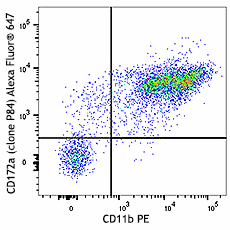
-

C57BL/6 mouse bone marrow cells were stained with CD11b PE and CD172a (clone P84) Alexa Fluor® 647 (top) or rat IgG1, κ Alexa Fluor® 647 isotype control (bottom). Data shown was gated on myeloid cell populatin. -

-

Paraformaldehyde-fixed (4%), 500 μm-thick mouse spleen section was processed according to the Ce3DTM Tissue Clearing Kit protocol (cat. no. 427701). The section was costained with anti-mouse/human CD45R/B220 Antibody (clone RA3-6B2) Alexa Fluor® 488 at 5 µg/mL (green), anti-mouse CD200 (OX2) Antibody (clone OX-90) Alexa Fluor® 594 at 5 µg/mL (yellow), and anti-mouse CD172a (SIRPα) Antibody (clone P84) Alexa Fluor® 647 at 5 µg/mL (magenta). The section was then optically cleared and mounted in a sample chamber. The image was captured with a 10X objective using Zeiss 780 confocal microscope and processed by Imaris image analysis software.
Watch the video.
| Cat # | Size | Price | Quantity Check Availability | Save | ||
|---|---|---|---|---|---|---|
| 144027 | 25 µg | £94 | ||||
| 144028 | 100 µg | £238 | ||||
CD172a, also known as SIRPα, is a type I transmembrane protein with one V-set Ig-like and two C-set Ig-like domains in the extracellular portion, and two ITIM motifs and a proline-rich region in the cytoplasmic tail. CD172a is expressed by monocytes, macrophages, myeloid cells, and neuronal tissue. The phosphorylation of SIRPα ITIMs induces the recruitment and activation of the tyrosine phosphatases PTPN6 and PTPN11, resulting in the negative regulation of several biological processes. The ligands of CD172a are CD47, SP-A, and SP-D.
Product DetailsProduct Details
- Verified Reactivity
- Mouse
- Antibody Type
- Monoclonal
- Host Species
- Rat
- Immunogen
- Mouse brain membrane protein
- Formulation
- Phosphate-buffered solution, pH 7.2, containing 0.09% sodium azide.
- Preparation
- The antibody was purified by affinity chromatography and conjugated with Alexa Fluor® 647 under optimal conditions.
- Concentration
- 0.5 mg/ml
- Storage & Handling
- The antibody solution should be stored undiluted between 2°C and 8°C, and protected from prolonged exposure to light. Do not freeze.
- Application
-
FC - Quality tested
3D IHC - Verified - Recommended Usage
-
Each lot of this antibody is quality control tested by immunofluorescent staining with flow cytometric analysis. For flow cytometric staining, the suggested use of this reagent is ≤ 0.25 µg per million cells in 100 µl volume. For 3D immunohistochemistry on formalin-fixed tissues, a concentration of 5.0 µg/mL is suggested. It is recommended that the reagent be titrated for optimal performance for each application.
* Alexa Fluor® 647 has a maximum emission of 668 nm when it is excited at 633 nm / 635 nm.
Alexa Fluor® and Pacific Blue™ are trademarks of Life Technologies Corporation.
View full statement regarding label licenses - Excitation Laser
-
Red Laser (633 nm)
- Application Notes
-
Additional reported applications (for the relevant formats) include: blocking SIRPa interaction with CD474, in vivo blocking of dendritic cell migration3, enhancing of macrophage phagocytosis2,4, immunohistochemical staining of cerebellum frozen sections1, immunoprecipitation2,4, and spatial biology (IBEX)5,6.
-
Application References
(PubMed link indicates BioLegend citation) -
- Comu S, et al. 1997. J. Neurosci. 17:8702. (IHC)
- Gresham HD, et al. 2000. J. Exp. Med. 191:515. (IP)
- Fukunaga A, et al. 2004. J. Immunol. 172:4091. (Block)
- Oldenborg PA, et al. 2000. Science 288:2051. (Block, IP)
- Radtke AJ, et al. 2020. Proc Natl Acad Sci U S A. 117:33455-65. (SB) PubMed
- Radtke AJ, et al. 2022. Nat Protoc. 17:378-401. (SB) PubMed
- Product Citations
-
- RRID
-
AB_2721300 (BioLegend Cat. No. 144027)
AB_2721301 (BioLegend Cat. No. 144028)
Antigen Details
- Structure
- Type I transmembrane protein
- Distribution
-
Monocytes, macrophages, myeloid cells, neuronal tissue
- Function
- Negative regulation of several biological processes
- Interaction
- PTPN6, PTPN11
- Ligand/Receptor
- CD47, SP-A, SP-D
- Cell Type
- Dendritic cells, Macrophages, Monocytes, Neutrophils
- Biology Area
- Cell Adhesion, Cell Biology, Immunology, Signal Transduction
- Molecular Family
- Adhesion Molecules, CD Molecules, Protein Kinases/Phosphatase
- Antigen References
-
1. Zhao XW, et al. 2011. P. Natl. Acad. Sci. USA 108:18342.
2. Verjan-Garcia N, et al. 2011. J. Immunol. 187:2268.
3. Sato-Hashimoto M, et al. 2011. J. Immunol. 187:291.
4. Raymond M, et al. 2010. Eur. J. Immunol. 40:3510. - Gene ID
- 19261 View all products for this Gene ID
- UniProt
- View information about CD172alpha on UniProt.org
Related Pages & Pathways
Pages
Related FAQs
Other Formats
View All CD172a (SIRPα) Reagents Request Custom ConjugationCustomers Also Purchased
Compare Data Across All Formats
This data display is provided for general comparisons between formats.
Your actual data may vary due to variations in samples, target cells, instruments and their settings, staining conditions, and other factors.
If you need assistance with selecting the best format contact our expert technical support team.
-
Purified anti-mouse CD172a (SIRPα)
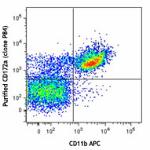
C57BL/6 mouse bone marrow cells were stained with CD11b APC ... 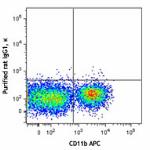
-
FITC anti-mouse CD172a (SIRPα)
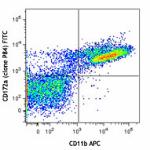
C57BL/6 mouse bone marrow cells were stained with CD11b APC ... 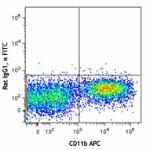
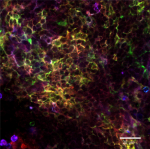
Fixed whole mount mouse spleen was stained with FITC CD172a ... -
PE/Cyanine7 anti-mouse CD172a (SIRPα)

C57BL/6 mouse bone marrow cells were stained with CD11b FITC... -
PerCP/Cyanine5.5 anti-mouse CD172a (SIRPα)

C57BL/6 mouse bone marrow cells were stained with CD11b APC ... -
PE anti-mouse CD172a (SIRPα)
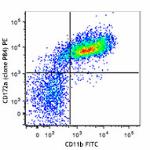
C57BL/6 mouse bone marrow cells were stained with CD11b FITC... 
-
APC anti-mouse CD172a (SIRPα)
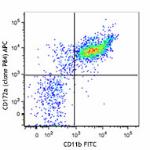
C57BL/6 mouse bone marrow cells were stained with CD11b FITC... 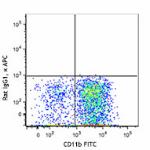
-
PE/Dazzle™ 594 anti-mouse CD172a (SIRPα)
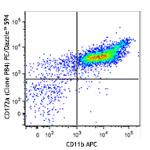
C57BL/6 mouse bone marrow cells were stained with CD11b APC ... 
-
Alexa Fluor® 594 anti-mouse CD172a (SIRPα)

C57BL/6 mouse frozen spleen section was fixed with 4% parafo... 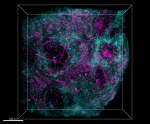
Paraformaldehyde-fixed (4%), 500 μm-thick mouse spleen secti... -
APC/Cyanine7 anti-mouse CD172a (SIRPα)

C57BL/6 mouse bone marrow cells were stained with CD11b FITC... -
Alexa Fluor® 488 anti-mouse CD172a (SIRPα)

C57BL/6 mouse bone marrow cells were stained with CD11b PE a... 
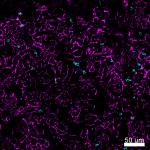
Confocal image of C57BL/6 mouse thymus sample acquired using... 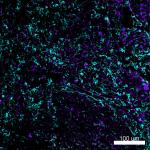
Mice were injected subcutaneously with sheep red blood cells... -
Alexa Fluor® 700 anti-mouse CD172a (SIRPα)
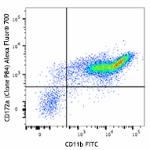
C57BL/6 mouse bone marrow cells were stained with CD11b FITC... -
Biotin anti-mouse CD172a (SIRPα)

C57BL/6 mouse bone marrow cells were stained with CD11b PE a... 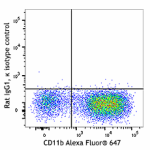
-
Alexa Fluor® 647 anti-mouse CD172a (SIRPα)

C57BL/6 mouse bone marrow cells were stained with CD11b PE a... 
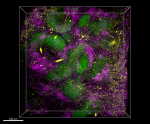
Paraformaldehyde-fixed (4%), 500 μm-thick mouse spleen secti... -
APC/Fire™ 750 anti-mouse CD172a (SIRPα)

C57BL/6 mouse bone marrow cells were stained with CD11b PE a... 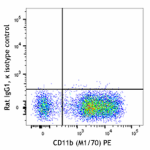
-
TotalSeq™-A0422 anti-mouse CD172a (SIRPα)
-
Brilliant Violet 510™ anti-mouse CD172a (SIRPα)

C57BL/6 mouse bone marrow cells were stained with CD11b APC ... -
TotalSeq™-C0422 anti-mouse CD172a (SIRPα)
-
Ultra-LEAF™ Purified anti-mouse CD172a (SIRPα)

C57BL/6 mouse bone marrow cells were stained with CD11b APC ... 
-
TotalSeq™-B0422 anti-mouse CD172a (SIRPα)
-
PerCP/Fire™ 780 anti-mouse CD172a (SIRPα)

C57BL/6 mouse bone marrow cells were stained with anti-mouse... -
Spark Red™ 718 anti-mouse CD172a (SIRPα) (Flexi-Fluor™)
 Login / Register
Login / Register 










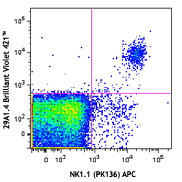

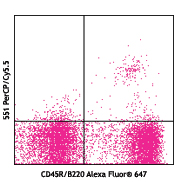
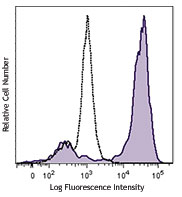



Follow Us